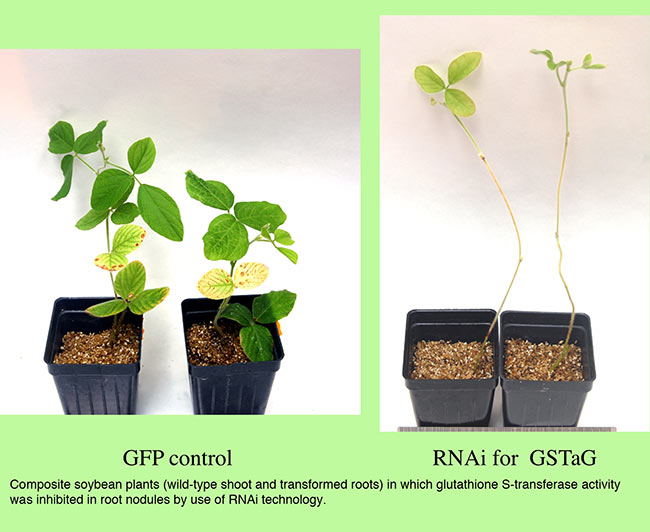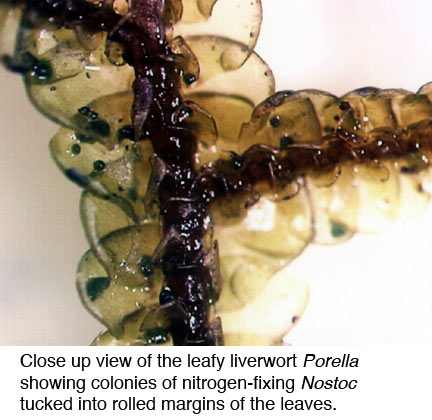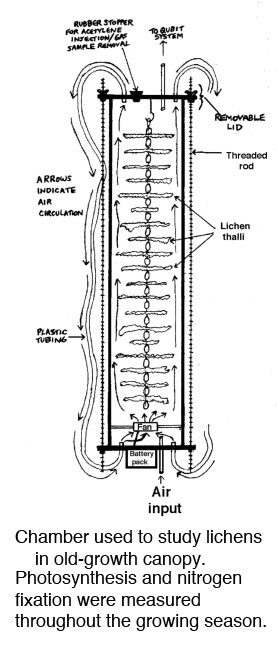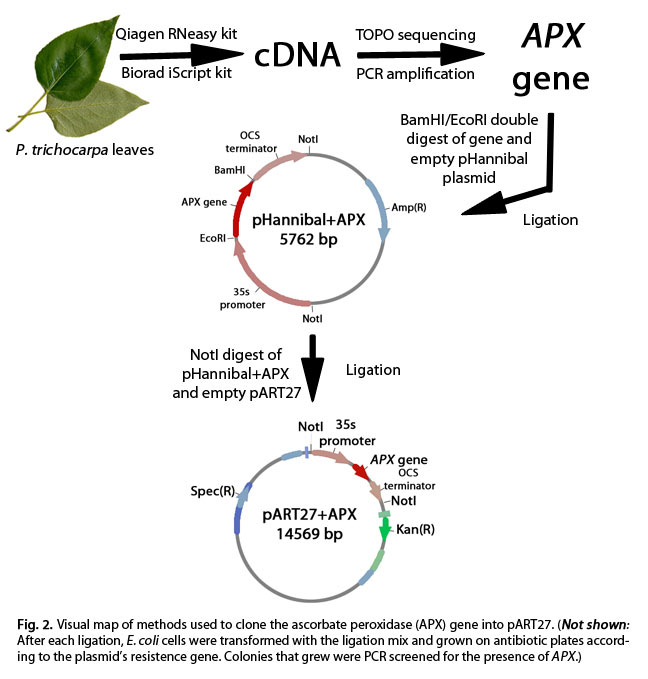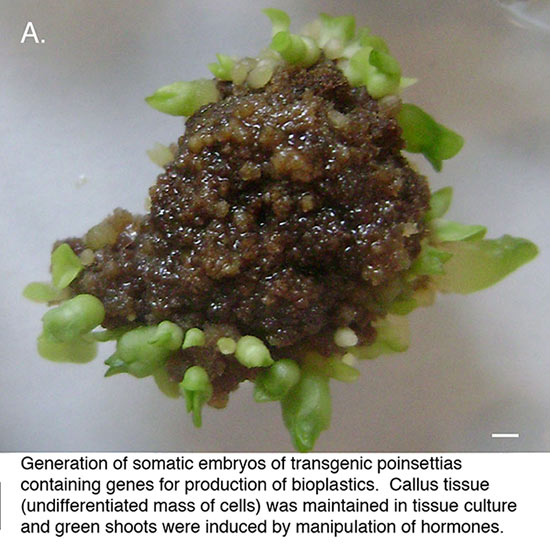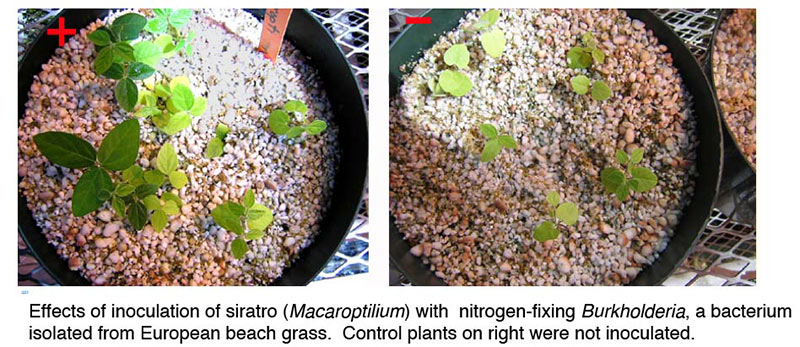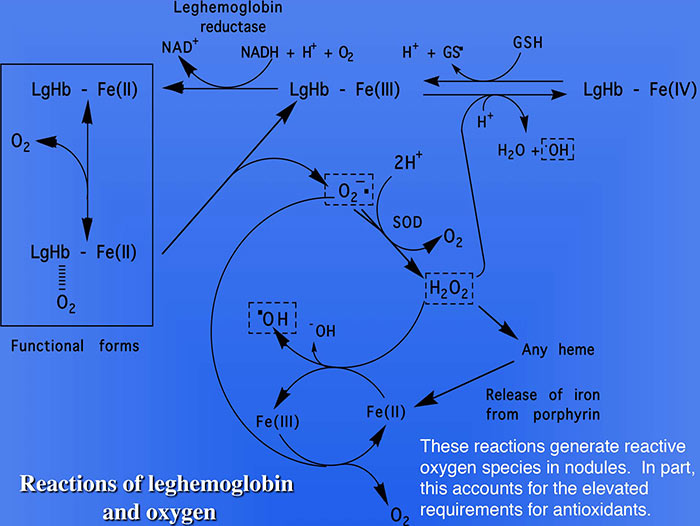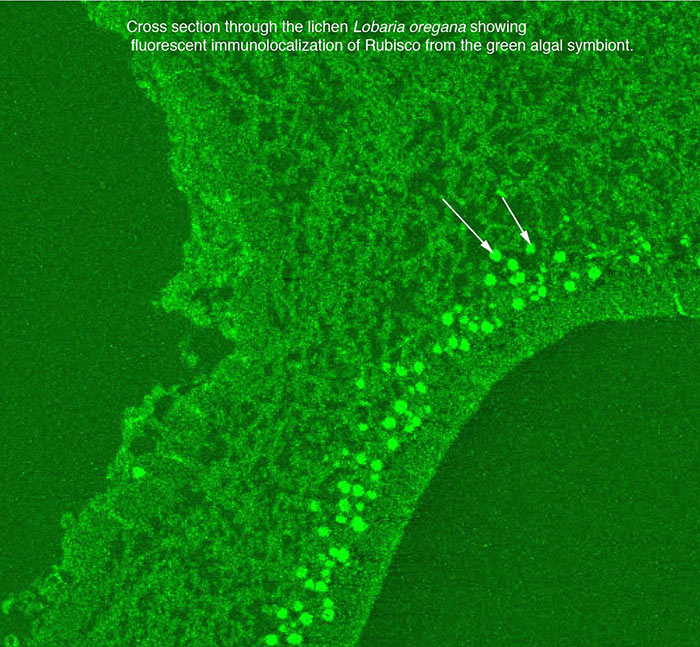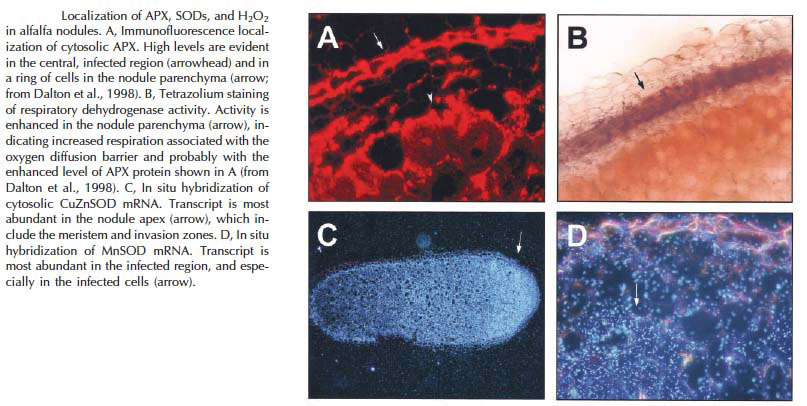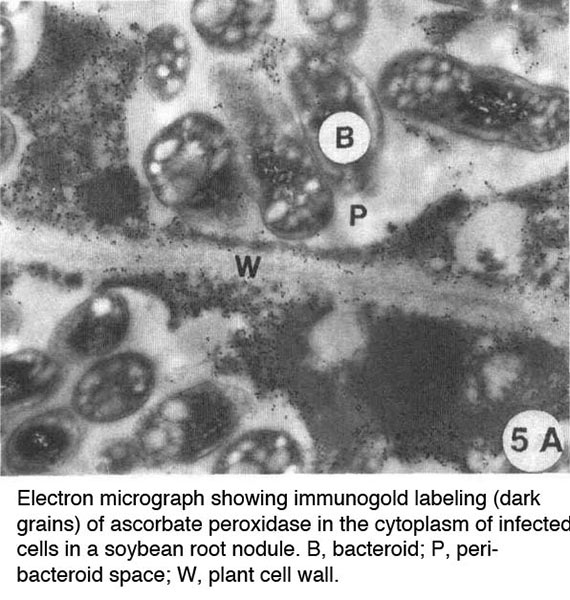Research
My primary interests are in biological nitrogen fixation and oxygen toxicity. Nitrogen-fixing plants (such as soybean, alfalfa, and alder) convert atmospheric nitrogen into ammonia and ultimately protein so they are partly self-fertilizing. However, this ability does not come without risks since nitrogen-fixing systems are very susceptible to damage from active forms of oxygen such as superoxide and hydrogen peroxide. My students and I have been examining various aspects of the defenses against active oxygen in nitrogen-fixing legume root nodules. We have concentrated on the role of the ascorbate-glutathione pathway which has 4 enzymes.
The research in my lab has been multi-disciplinary, starting first with traditional protein purification and characterization. This allowed us to make antibodies for immunolocalization studies in which we showed that ascorbate peroxidase is cytosolic and particularly enhanced in the endodermis layer of legume nodules. At the whole-plant level, we have shown up-regulation of the ascorbate-glutathione system in response to elevated ambient oxygen and in effective (i.e. capable of nitrogen fixation) as opposed to ineffective nodules. We have also explored the molecular biology of nodule antioxidants. Two of the oxygen defense genes (ascorbate peroxidase and glutathione reductase) have been cloned and sequenced. The peroxidase gene was moved into an E. coli expression system to facilitate the production of large amounts of pure recombinant protein. This allowed us to develop an in vitro reconstitution system ("bionic nodules") containing nitrogen-fixing bacteria, leghemoglobin, and the components of the ascorbate-glutathione system. These "bionic nodules" showed a remarkable 4-fold increase in nitrogen fixation when amended with antioxidants. Support for this work has been provided by the National Science Foundation for more than 17 years.
My students and I have also investigated the environmental physiology of antioxidant processes in conifers from the Pacific Northwest. Antioxidant defenses in conifers are a major means by which they deal with environmental stresses such as chilling, strong light, and drought. We are using the Wind River Canopy Crane Research Facility near Carson, Washington to examine foliage of Douglas-fir and Grand fir at various heights in the old growth canopy to determine how antioxidants vary with respect to season and position in the canopy. Other studies have focused on the important role of nitrogen-fixing lichens (Lobaria oregana) in these canopies.
My lab has also uncovered a novel system of nitrogen fixation in European beachgrass (Ammophila arenaria). We have observed that this grass harbors nitrogen-fixing bacteria living within the cell walls of stems and rhizomes, making this the first known case of endophytic nitrogen fixation by any temperate grass species. We have isolated the bacterium responsible for nitrogen fixation (Burkholderia tropicalis) and are in the process of further characterizing this system using a wide range molecular, biochemical, and ecological approaches. See photomicrograph below.
A. Confocal immunofluorescent image obtained with use of anti-nitrogenase antibodies indicating the presence of nitrogen-fixing bacteria (glowing yellow or blue spots) in the cell walls of beachgrass.
B. Transmission electron micrograph showing immunogold localization of nitrogenase in cell walls of beachgrass
C. Typical scene on the Oregon coast showing prominent grasses on the sand dunes.
We have also explored the role of glutathione S-transferase (GST) in nitrogen-fixing nodules of soybean. There are 25 GST genes in soybean. The function of GST is unclear, but we postulate that it may be another aspect of the antioxidant defense in nodules. Our initial results with quantitative real-time PCR indicate that the expression of GST9 in nodules is much more enhanced than is the case with other GSTs. This work is being supported by NSF grant IOB 0517688 for 2005-2008.
Most recently, my lab has explored the potential of producing biodegradable, bioplastics (specifically polyhydroxybutyrate or PHB) in transgenic poplar. These plastics hold the potential of replacing petroleum-based plastics. In collaboration with Steve Strauss (Oregon State University), we are developing inducible promoter systems to regulate production of plastic in leaves under conditions which minimize the negative impact on plant growth.
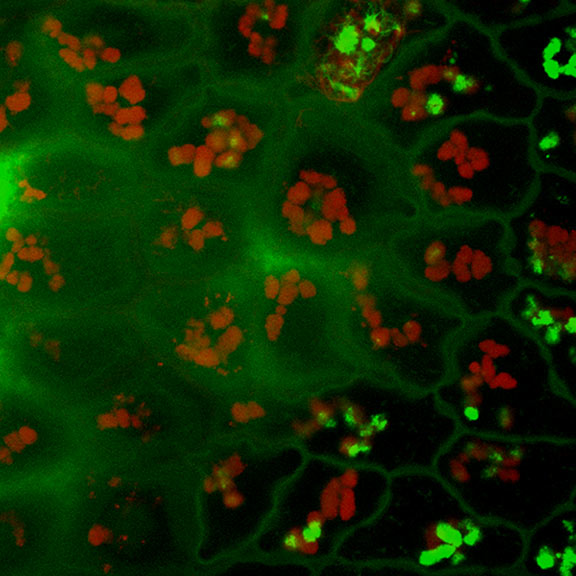
Photomicrograph of fluorescence granules of bioplastic within chloroplasts of poplar. Photo by Peter Kitin.
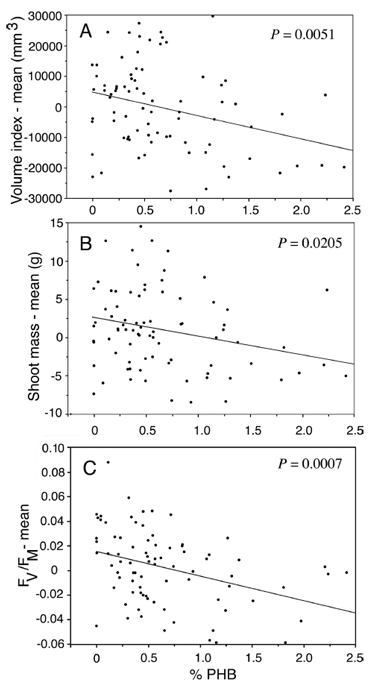
The production of bioplastic PHB in leaves of poplar results in negative effects on plant size (A), weight (B), and chlorophyll fluorescence (C, an indication of stress). Current efforts are focused on experimental approaches to minimize these negative impacts.
I also have interests in the ecology and natural history of the West, especially as it relates to the observations of Lewis and Clark. I am the author of a recent book on this topic, entitled The Natural World of Lewis and Clark published by the University of Missouri Press. Review link.
 |
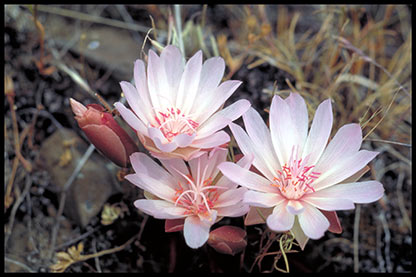 Lewisia rediviva (bitterroot). Photo by Keith Karoly |


